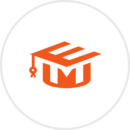The Increasing Demand
for Nurses
Why Trust EduMed? We partner with 150+ nursing & allied health professionals to bring you the most in-depth data & insights on higher education & careers in healthcare. Meet our team and review our editorial values.
Need is high for nurses in the U.S. Demand continually outweighs supply, especially with the growing healthcare needs of aging baby boomers. This high demand for nursing professionals means that nursing programs are making room for more students while also making learning more flexible than ever.

Experts believe nursing to be recession-proof and rank it among the most resilient and durable professions. Qualified nurses are essential in caring for aging populations, which means high employment rates and expanded job opportunities. Recent increased need, made more dire because of COVID-19 pandemic, has led to a nursing shortage.
There’s never been a more opportune time to become a nurse or to elevate your healthcare career from a medical assistant or similar position to a position in nursing. Schools are recognizing the nursing shortage by making room for more students and by making programs flexible through online and hybrid options.
This guide shows some of the main causes of the nursing shortage, looks at the areas of strongest demand, and details some especially advantageous career pathways for current and future nursing professionals.
What’s Causing the Nursing Shortage?
FACT
1
An aging nursing workforce means a coming nursing shortage.
According to Montana State University, almost 40% of RNs are 50 years of age or older. This means much of the nursing workforce will reach retirement age within the next 15 years.
FACT
2
Lack of nursing faculty results in fewer nurses trained.
According to the American Association of Colleges of Nursing’s (AACN) annual graduation and enrollment report, over 80,000 qualified applicants were turned away from nursing programs in 2019-2020. Most schools identified a lack of faculty as the underlying cause.
FACT
3
An aging population means increased demand for nurses.
In 2017, the U.S. Census Bureau reported that by 2030, over 82 million U.S. residents will be 65 or older. Baby boomers transitioning into late adulthood means increased demand for nurses, especially those specializing in geriatric care.
FACT
4
Increased life expectancy means more people in need of care.
According to the U.S. Census Bureau, people in the U.S. live longer than ever because of advances in science and medical knowledge. This means more people need care.
FACT
5
Not enough new nurses are entering the workforce.
Lack of nursing faculty leads to lack of new nurses trained. The AACN notes that the 5.1% increase in enrollment over previous years is not enough to meet growing demand.
Where is the Greatest Demand for Nurses?
The U.S. Bureau of Labor Statistics projects that demand for RNs in the U.S. will increase by at least 7% over the next decade. That figure outpaces the average for all occupations nationwide. The top growth industries for RNs include general medicine hospitals, physicians’ offices, and home health care services. Another demand area, nursing educators, sees the most national growth in universities, professional schools, junior colleges, and general medicine offices.
This section looks at states with the highest growth projections for RNs and nursing instructors and at the impact of a nursing shortage on demand and job growth. It details these high-demand areas in terms of industry and geography and shows that while some states see more encouraging growth numbers than others, the national job outlook for both professions remains very strong.
States with the Highest Growth Projections for RNs
Arizona, Colorado, Utah, New York, and Georgia have the highest projected growth rates for RNs over the next ten years. They have higher concentrations of aging populations and a greater number of working RNs approaching retirement age. Most are experiencing some combination of the two alongside other factors. As a result, their growth outperforms the national average for RNs.
Arizona, for example, looks to see the biggest increases by far with a projected growth rate of 35% leading to over 7,500 new RN jobs. Colorado ranks second with 29.5%, projecting just over 15,000 new RN positions by 2028. Utah, New York, and Georgia will see between 22-28%. Each state, except the less-populated Utah, will add over 15,000 new jobs with New York projected to add nearly 50,000.
States with the Highest Growth Projections for Nursing Instructors
Projected growth numbers for nursing instructors looks similar to that for RNs. For the reasons detailed above, Utah, Georgia, Colorado, Nevada, and Tennessee are seeing higher nursing enrollment numbers and above average demand for nursing professionals. The job outlook for qualified lecturers, professors, and clinical instructors remains strong and will continue growing over the next decade.
Utah and Georgia will likely see growth rates at 54% and 40% respectively. Projections Central estimates that both states will add hundreds of new jobs in postsecondary nursing education by 2028. Colorado, Nevada, and Tennessee have growth rates above 30%. In each state, the job outlook for professionals offering classroom instruction or clinical units to nursing students exceeds other regions across the country.
Nurse Growth by State
The table below lists projected job growth numbers for RNs and nurse educators for each U.S. state over the next decade. Most states will see positive demand increases for both professions, and forty-four will see growth rates over 10% for nursing instructors. For RNs, 35 states are projected to see at least a 10% increase over the same period. Utah, Colorado, and Georgia have with the highest projected growth for each career. Alaska and Mississippi rank near the bottom for both.
How Can You Benefit from the Nursing Shortage?
The numbers indicate a clear spike in demand for nurses, so the potential for growth remains strong. New nursing professionals not only benefit from wider job availability, they also have significant increases in salary prospects. For example, the BLS says the median annual wage for RNs is $73,300, nearly double the national average for all occupations. Top RN earners bring home more than $111,220 on average with the lowest percentiles receiving around $50,000.
This section details common nursing education and career pathways. It discusses becoming a nursing educator and advancing as a nursing professional in several areas. Learn more about the options available and how to enter this thriving job market below.
Become a Registered Nurse
Becoming a registered nurse is a popular option for prospective nursing professionals. It typically involves completing a formal education program, including practicum components like clinical rotations, and passing the NCLEX-RN exam. Completion timeframes vary and depend on the type of program. Some candidates earn an associate degree, but others opt for 4-year credentials.
Administered by the National Council of State Boards of Nursing (NCSBN), the standardized NCLEX-RN exam verifies skills and authorizes candidates for licensure. All aspiring RNs must complete the test and then follow the licensure requirements specified by their state. The NCSBN keeps a directory of state licensure boards along with common requirements.
Busy learners and working professionals can take advantage of online or accelerated programs to complete RN education requirements. These programs still require in-person completion of fieldwork and clinical hours, but they deliver most, if not all, coursework entirely online. Using innovative technological tools, they provide optimal flexibility to accommodate busy schedules.
Elevate Your Current Healthcare Career
If you already work in nursing or healthcare, there are several ways to elevate your career. Completing a bridge program can advance your professional standing and cultivate additional skills. This broadens your job prospects, allows you to take advantage of the increased demand, and expands your earning potential.
Paramedic to RN Bridge
This bridge program help paramedics translate existing skills and knowledge into credentials necessary for nursing licensure. This usually means earning a 2-year degree, but some students may earn a bachelor’s instead. Such programs build on prior foundations, often in an accelerated format, without repeating courses.
LPN to RN Bridge
LPNs can enroll in similar bridge programs that allow them to expand skills and career prospects as an RN. Most programs are easily finished in under two years. Intensive or accelerated options can further reduce this timeframe, especially if you already hold a position as a nursing professional.
Become a Nurse Educator
Becoming a nursing instructor helps address one of the root causes of the nursing shortage: not enough nurse educators. Nurse educators help reduce the shortage by expanding educational opportunity for qualified nursing candidates.
Current nursing professionals can make this transition easily. The most accessible path involves earning a master’s degree in an area that fits your expertise. Some students – particularly those with an interest in research – choose to go even further and earn a nursing doctorate. Learn more below.
Nurse Practitioner
This pathway builds on core skills and knowledge foundations used by RNs. Nurse practitioners typically take on broader responsibilities, can prescribe medications, and can diagnose issues in addition to providing ongoing care. Most nurse practitioners earn an advanced degree to prepare them for specialized practice, teaching, or research.
Master of Science in Nursing
A Master of Science in nursing lays the groundwork for expanded job opportunities and a wider range of practice. These programs come in several forms to accommodate a variety of backgrounds: direct entry, accelerated format, RN to MSN, and BSN to MSN. Our guide to MSN programs details each path and how to leverage them for success.
Become a CNA
For new nursing students or those exploring the field, becoming a certified nursing assistant (CNA) can get your foot in the door. CNA credentials qualify you for entry-level work in a variety of healthcare facilitates and support further career advancement. For example, if you decide to become an RN, you will already have completed some of the requirements.
CNAs help combat the nursing shortage and alleviate stress on nurses by providing support for RNs and other nursing professionals. CNA programs only take a few months to complete and instill foundational nursing skills and knowledge.
Become an LPN
The licensed practical nurse (LPN) pathway is another option for nursing professionals early in their career. While not as advanced as the RN or nurse practitioner, LPNs enjoy a wider scope of responsibility than CNAs with broader job and earning potential. Because LPNs typically work under RNs, they help reduce stress stemming from the nursing shortage by sharing the workload.
Most LPN programs last a few years depending on whether you earn a degree or a certificate. These programs build on CNA foundations and cultivate additional skills in healthcare delivery through hands-on components like fieldwork placements and clinical rotations.
Resources
- American Academy of Nursing This professional organization supports nurses by promoting health policy and advancing scientific research. It also publicizes employment and funding opportunities.
- American Association of Colleges of Nursing A major nursing accreditation agency, this association provides scholarships to nursing students. It also engages in public advocacy efforts on their behalf.
- American Board of Nursing Specialties This organization promotes excellence in nursing certification and is a resource for professionals looking to expand their skills. It hosts conferences and confers awards for outstanding achievement.
- American Board of Nursing Specialties This organization promotes excellence in nursing certification and is a resource for professionals looking to expand their skills. It hosts conferences and confers awards for outstanding achievement.
- American Society of Registered Nurses This organization supports local RNs by publishing innovative research and providing funding opportunities. It also hosts meetings and virtual conferences.
- National Council of State Boards of Nursing An important resource for any nursing professional, the NCSBN maintains a directory of state nursing boards in the U.S. It also provides licensure information and exam study materials.
- National Institute of Nursing Research Sponsored by the National Institutes of Health and the U.S. Department of Health and Human Services, this site extends funding and training opportunities to new nurses. It also generates publications and research materials.
- National League for Nursing This entity supports working nurses through professional development programs and certification opportunities. New students can use the organization’s accreditation and testing guides.
- National Student Nurses’ Association This association supports nursing students at every level. The only national organization of its kind, it maintains a career center and sponsors local events.
- Professional Nurse Educators Group One of the only professional organizations for nursing educators, this group hosts conferences and encourages peer collaboration. It also provides best practice resources for faculty and teachers.


